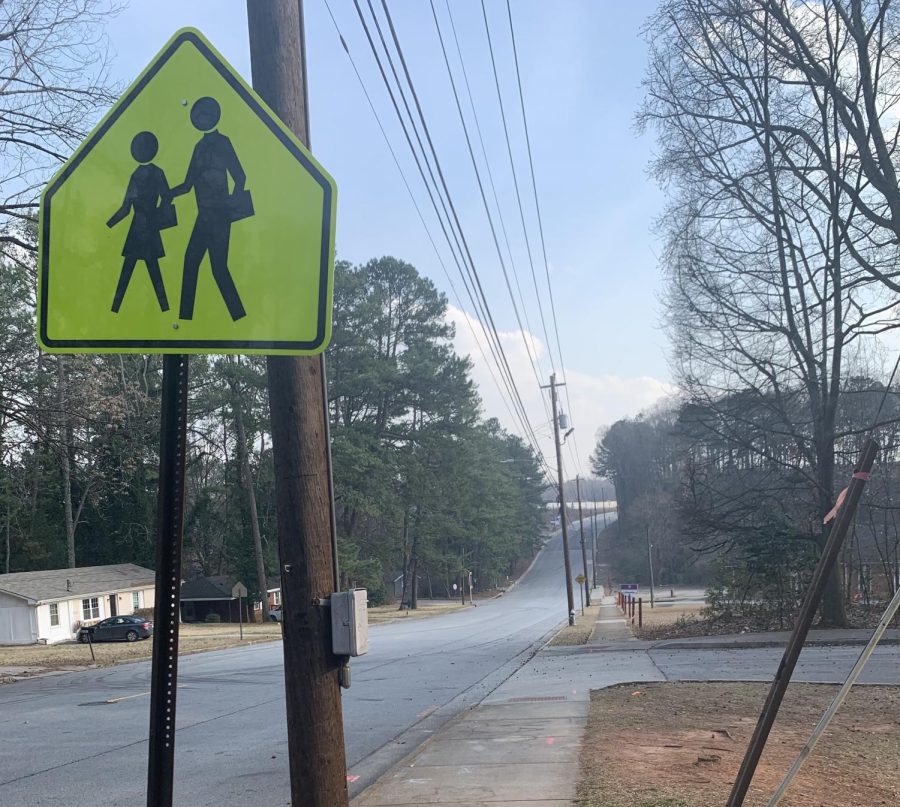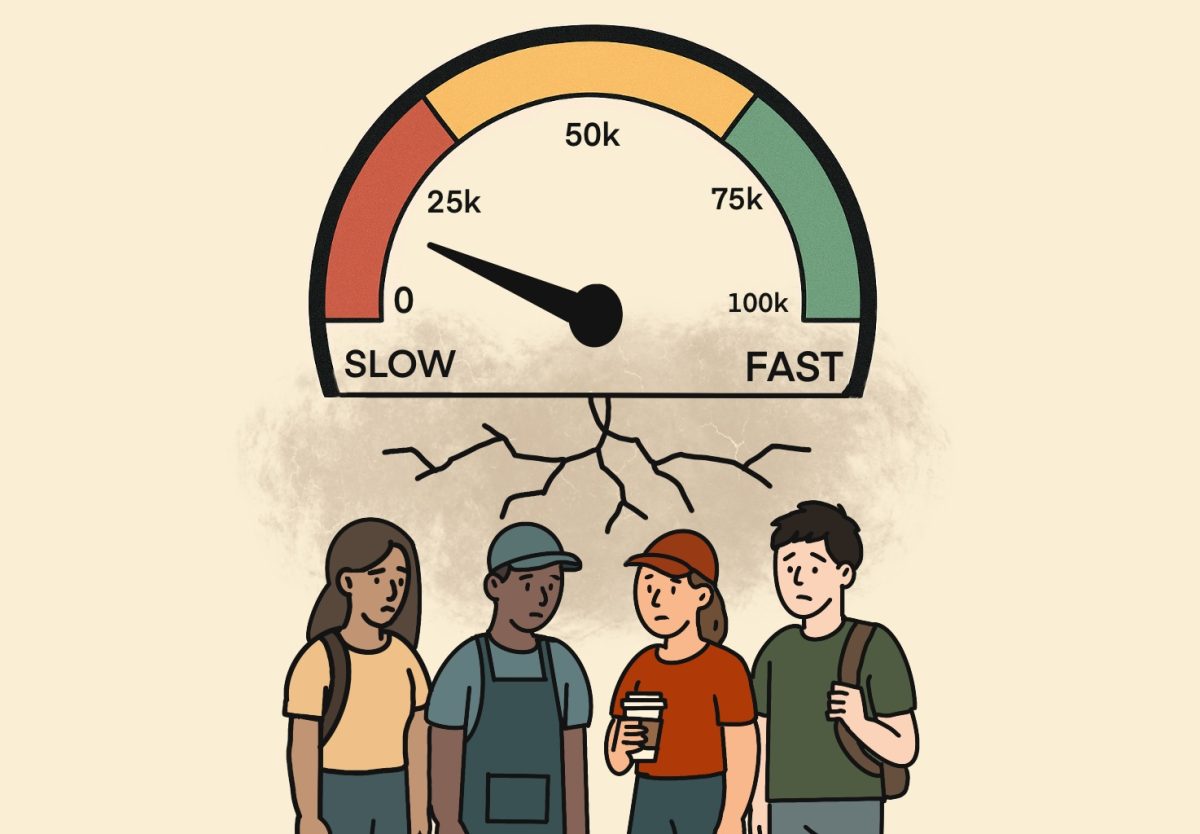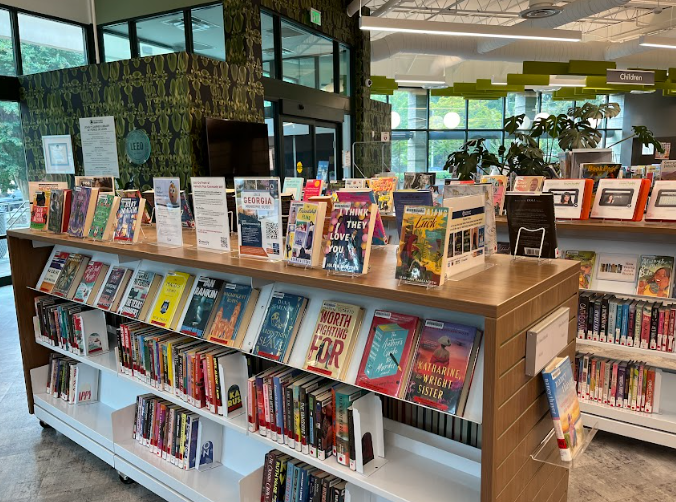Pedestrian safety club works to improve school promenade
The Atlanta Department of Transportation (DOT) is overseeing the construction of a protected walk and bike lane on Empire Boulevard, which will serve students of Crawford Long Middle School in southwest Atlanta. Midtown organization Atlanta Students Advocating for Pedestrians (ASAP) is looking to get involved through bike repairs and construction assistance.
March 12, 2023
Midtown’s pedestrian safety organization, Atlanta Students Advocating for Pedestrians (ASAP), is on track to participate in the opening of a protected walk and bike lane on Empire Boulevard. The student-led organization is looking to use takeaway experience to create positive change on Midtown’s campus.
The Atlanta Department of Transportation (DOT) is overseeing the construction of the lane after receiving grants from the National Center for Safe Routes to School, whose pilot program is to construct quick-build projects to improve road safety for the youth in underserved areas.
The lane will serve students at Crawford Long Middle School, located in southwest Atlanta in the Glenrose Heights neighborhood. Junior and president of ASAP, Greyson Forster, said the organization first heard about the project when City for Atlanta Safe Routes to School manager, Nichole Hollis, spoke to the organization in late January.
“ASAP has maintained a close relationship with [Ms. Hollis] throughout her various career positions,” Forster said. “Jacob Smith, who is the leader of the Vision Zero consulting group that chose to assist us, informed us that Hollis had a pipeline of projects that she wanted to share.”
One of the projects which Hollis shared with ASAP members was the protected walk and bike lane. Ahead of the organization’s involvement with this project, senior Farha Sajid, who is an ASAP member, said she feels grateful for the opportunity.
“I feel like we have a big responsibility for the decisions we make because they will affect many pedestrians, as well as drivers,” Sajid said. “But, I know that with the help of our experienced mentors, we will be able to bring many of our tasks to life.”
Leading up to the lane’s opening in May, there will be monthly promotional days and infrastructural improvements, which is intended to maximize the number of students who can safely walk to school within Crawford Long’s small radius, Forster said.
“There has been planning for local bike buses, which are groups of children biking to and from school led by adults, for the promotional days,” Forster said. “It’s a safety and fun-in-numbers concept popularized throughout and post the Covid-19 era.”
ASAP is also seeking to assist students with bike repairs and other services. Forster says ASAP may work with the bicycle repair shop Aztec Cycles in its assistance with the bikes.
“ASAP hopes to facilitate bike repairs, and even possibly teach about leadership, too,” Forster said. “We will be speaking with the manager [of Aztec Cycles] soon about possibly renting their mobile repair service on an hourly basis [for the promotional days].”
Forster also says ASAP may return to prior initiatives to further bolster its goal of bike repairs in the promotional days.
“ASAP may reignite our previous ‘tune-up ticket’ initiative that we underwent with the National Youth Bike Council,” Forster said. “These tickets are redeemable for small bike repairs at select bike shops. As a club, we would need to patter with local bike shops, as this solves the struggle for popularity and utilization that we had last year.”
The organization will also assist in the construction of the lane using its prior experience in tactical urbanism.
“We have helped with a similar construction project in the Adams Park neighborhood, Boulevard Granada, where we painted and filled protective ‘planters’ with dirt,” Forster said. “This experience will also use a strategy for quick build infrastructure improvements.”
Junior Evan Weimann, ASAP vice president, said he believes the organization will accomplish meaningful change by directly helping students with their desires.
“It seems like in a lot of these schools, such as Crawford Long, there is a group of people who would want to walk or bike to school who are not doing it,” Weimann said. “It’s pretty sizable because of various factors of walkability and how normalized it is to get to the school. So, it seems like this is a real situation where we have the potential to create a lot of positive change.”
Sajid shares this sentiment and is excited about her future contributions because of the possibility to connect her ideas to tangible impacts regarding the project, all to bolster pedestrian safety within the Crawford Long community.
“[The project] ??gives me the opportunity to use my creative and analytic skills to interpret situations and create possible solutions to our problems,” Sajid said. “Increasing pedestrian safety will prevent many pedestrians, especially students, from getting severely injured. I hope with our efforts, we are able to increase pedestrian safety and encourage the community to take steps towards more pedestrian safety, as well.”
Weimann agrees with Sajid on the importance this project will have on the future transportation within the Crawford Long community, and hopes the project will generate green urban transportation in addition to momentum for projects in the Midtown area.
“I think receiving help from the Department of Transportation is a jumping-off point towards implementing more projects locally,” Weimann said. “I think maintaining that relationship for projects of our own can be important, and I also think these lessons [from Crawford Long] will be useful for us and future projects.”
Forster ultimately believes the project coupled with ASAP’s involvement will impact Crawford Long middle school students the most.
“The road conditions in the area are simply bleak, with so many young children forced to walk on sidewalk-less arterials as traffic speeds past them,” Forster said. “Community-wise, this project communicates that they and their youngest are not forgotten by the government. With limited resources, the truly highest-impact areas are being worked on.”







